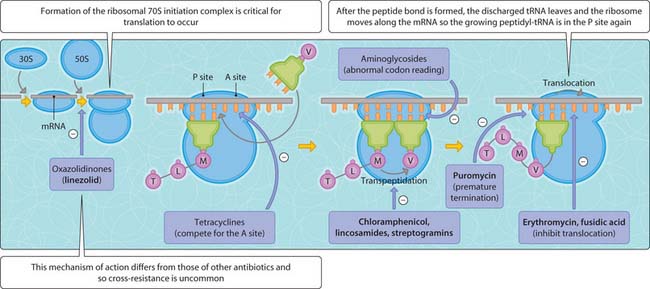44 Chemotherapy
antibiotics targeting protein synthesis
Agents affecting protein synthesis
Bacterial protein synthesis occurs on ribosomes, which are made up of two subunits (50S and 30S in bacteria). Messenger RNA (mRNA) is the template for protein synthesis and transfer RNA (tRNA) brings each amino acid to the ribosome for assembly into the protein molecule (Fig. 3.44.1). A number of different classes of drug selectively target different elements of this process. These agents are bacteriostatic, with the exception of aminoglycosides and oxazolidinones.
Aminoglycosides
Chloramphenicol is bacteriostatic and binds to the 50S subunit, inhibiting peptidyl transferase activity. This prevents transpeptidation of the growing amino acid chain on the P site to the newly arrived peptidyl tRNA on the A site. This antibiotic has a broad spectrum of activity; however, susceptibility to resistance is high because of expression of ‘chloramphenicol acetyltransferase’. The ability of chloramphenicol to cause aplastic anaemia (decreased production of red blood cells) when administered systemically limits its usefulness and it is reserved for life-threatening infections.
Stay updated, free articles. Join our Telegram channel

Full access? Get Clinical Tree





